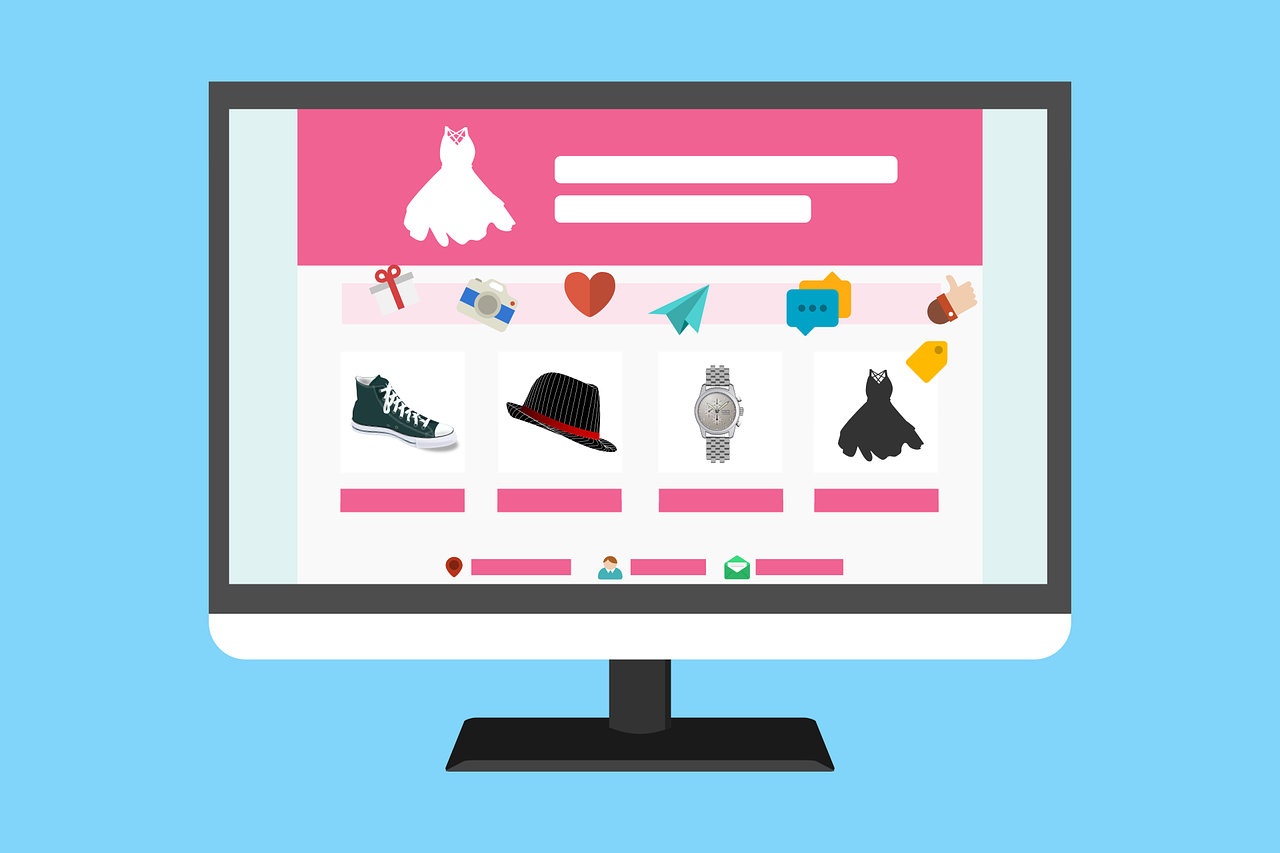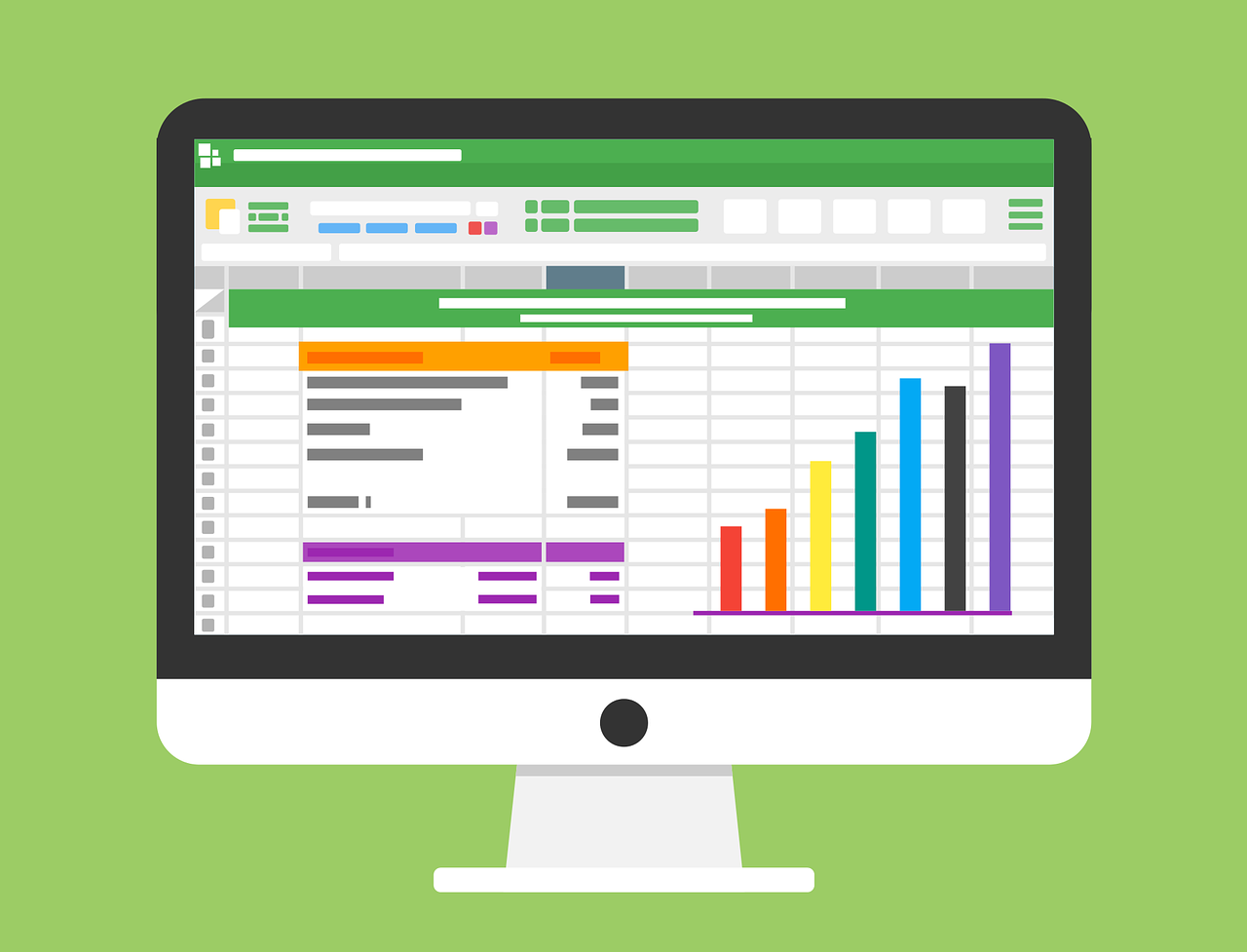When I rolled my eyes. You see, people think blogging is a new thing. But when they actually sit down to write their first posts, they face off: I think it's difficult. As soon as someone starts a new job, he interrupts things.
When I tell people that I blog for a living, they close their eyes. "It's very easy," he says. You get paid to sites on the internet and all day and write. A monkey can do his job.
Okay fine. This is what every new blogger does. Fortunately, it's easier to avoid these roadblocks if you know they're coming.
Download Now: 6 Blog Post Templates
So keep reading for all the beginner bloggers who are looking for a fast search. Here are some common mistakes most beginners make and some tips on how to avoid them.
What Is A Blog?
Simply put, a blog is a tool to help promote an online presence, attract leads, and engage with an audience. It is often a series of editorial content centered around the main article, showcasing Company expertise. For example, the catering company "11 is an appetite offering to serve the best people" or "Stress-free dinner parties: recipes like blog posts. Prepared ahead of time."
Blogs can help drive traffic to your websites and convert that traffic into leads, establish authority in your company, and ultimately grow your business. In fact, organizations see 14% more positive ROI than blogging.
Blogging tips for beginners
- Create blog posts that meet the goals of your big company.
- Identify what resonates with your audience.
- Write as you speak
- Show off your personality. Don't tell me
- Make your point over and over again.
- Start with a specific job title.
- Specific posts still need to be wrapped in a larger image.
- Use a specific post type, outline, and header.
- Give your audience something to walk on.
- Use your data and search to back up the claims you make in your posts.
- Use examples of what you are saying.
- Refer to others when quoting their opinions.
- Take 30 minutes to edit your post.
- At a certain point, just publish it.
- Blogging with help of an editorial calendar.
- Focus on organic traffic.
- Add a subscription to an email newsletter.
Avoid Blog Post Mistakes
Most blog traffic is regular - in other words, users will search for something on search engines and click on your blog if it matches the title you're looking for. avoid common blog mistakes. Avoid it.
Here some most common blog post mistakes. (and their solutions).
1. Create blog posts that meet the goals of your big company.
Mistake: if You think of ideas that only interest you.
As much as you can read after your blog posts are published, you are not just a reader or the desired reader.
Thoughts can be random, but thoughts themselves should never be random. Just because it's usually a good idea. Or something that interests you personally. - This does not mean that it is a good idea for your company.
 |
| Image by 200 Degrees from Pixabay |
Solution: your blog posts with the company's growth goals.
The reason you blog is because you solve problems for your audience and ultimately grow your business. Therefore, all your blog post ideas should help in fulfilling these development goals. They should be natural to your Company's concerns and address specific questions and concerns you may have.
"Your blog is a honeypot, not a megaphone. Make it a point that you want to tell your audience what they want to discover instead."
2. Identify what resonates with your audience.
Mistake: You forget your personality.
If you want your blog content to perform well (such as generate traffic, leads, and sales), it will resonate with your audience and force them to take action. The biggest mistake is to assume that your content will perform if you don't really consider your audience or these steps.
 |
| Image by 200 Degrees from Pixabay |
Solution: Understand your personality pain and solve it.
You can fill in the blanks by describing your buyer's personality and the important things about them.
Personality is the basis of everything you create. Writing for yourself doesn't always resonate with your audience. If instead, you talk about your personal pain, challenges, and goals, and It feels like they are.
If you are not deliberately thinking about your personal pain, you are only creating content for the sake of content, which is a waste of resources.
3. Write as you speak.
Mistake: Your writing is too strict.
Writing a blogging post is different from writing a term paper. But when bloggers start, the experience usually follows. Issue? Writing an article is not a way for people to enjoy reading.
Let's be honest: most people who see your post don't read the whole thing. If you want to keep them interested, you have to force them to read in a way that is not easy to read.
 |
| Image by mohamed Hassan from Pixabay |
Solution: Try to write a blog that feels personal.
It's okay to discuss more in your post - in fact, we encourage that. Your writing will be so easy, people will enjoy reading it more. Peoples want to feel that they are doing business with real peoples, not robots.
So relax your writing. Throw in the contraction. Get rid of jargon. Make one, two, or two. That's what real people say - and that's what they like to read.
4. Show off your personality. Don't tell me
Mistake: if You think people care about you as a writer.
This may sound harsh, but it's true: when people first start blogging, they think the audience is naturally interested in their stories and their interests ... but it's not. As an individual, there is no knock against them - only when you are new, no one will be interested in you and your experiences. People care more about their education.
Solution: Impress your personality without paying attention to the subject.
Although people don't really care that you're writing this post, you can add some personality traits to your writing to make them feel more comfortable with you. Some people like to break jokes, some like to refer to pop culture, and others like to be clear.
Show personality in a blog post
Ways to add personality to your writing, try to find ways to engage your readers on this article - about which you are writing - then write in the first person as if you are hanging out with them Make it personal, charming, and charming, as you talk face to face.
5. Make your point over and over again.
Mistake: You dig.
Although you are encouraged to brighten your personality in your writing, do not abuse this privilege. It's one thing to be self-reliant on the subject you're covering, but another thing is to offer a lot of personal experiences that bury the point you're trying to make.
Don't overdo these personal stories and similarities - your readers aren't sitting in front of you, which means you can't guarantee your individual attention. If they lose patience, they can (and will) bounce your article.
Solution: Repeat your argument.
To prevent your writing from losing viewers, repeat your point in each part of the article. The best blog posts promise a massive message and then slowly, many times from beginning to end in small ways.
If you're writing about how much water an uprooted plant needs, for example, don't spend three paragraphs telling the story of how you got home from a dead fern after a two-week vacation. ۔ This story is a true testament to your point of view, but what about yours? This is a possible point, and it should be stated.
6. Start with a specific job title.
Mistake: Your titles are too broad.
When people start blogging, they usually want to write on really big topics like:
- "How to do social media marketing"
- "Best Business Practices"
- "How To Make Money On The Internet"
Titles like these are very broad. Because these topics have so many details and nuances, it's really hard to do anything good to answer them. In addition, more specific titles attract smaller, more targeted audiences, which are of higher quality and turn into more users and users.
Therefore, in order to reap the extremely short-term and long-term benefits of blogging, you'll need to take a more specific approach.
Solution: Start with a clear, comprehensive idea.
In order to get your first few posts out of the park, it's really important to nail certain blog topics. Let's help you with stress through our Blog Ideas Generator. This tool allows you to enter the basic terms you know you want to cover, and then create five sample blog titles that work for business blogs.
Keep in mind that a working title is not final - keeping your writing on track is just a solid angle. Once you get out of this phase of the ideological process, it becomes easier to write blog posts.
7. Specific posts still need to be wrapped in a larger image
Mistake: You do not associate a particular topic with the wider struggles of your readers.
You already know how important it is to resonate with your buyers and understand their pain areas. However, one reason is that they are experiencing pain points and what is happening to them to resolve them.
Solution: They face challenges and consequences.
You ask yourself:
- Is it at stake?
- What do they gain by taking action?
- What are they afraid of if they don't take action?
A glimpse of all these things can also be shown in the article you write for your blog post. Doing so will signal to your reader that you understand what is happening and that you want to help.
Understanding what you're writing about. To what extent will it fit the wider readers' challenges? The meaning and value of any post you write will enable you to better communicate with your readers.
8. Use a specific post type, outline, and header.
Mistake: Your writing is a brain dump.
Sometimes I get so excited when I come up with a great idea, it's really tempting to just sit there and get it out of me. But what I get is usually a sub-equivalent blog post.
Why? The modern writing style is not a really good style for blog posts. Most people are going to scan your blog posts, not read them, so to do that you really need to organize it well.
Solution: Create your blog with the help of templates, outlines, and section headers.
The first thing you need to do is decide what kind of blog post you are going to write. Is this how to post? A list-based post? Curated Collection Post? A slide share presentation? Download our free templates to help create five different blog posts. Once you have the template, it's easy to sketch.
Sketching makes a big difference. If you set aside time to organize your thoughts and create a logical flow in your post, everything else becomes easier - you are basically just filling in the blanks.
The use of headers is also important for the reader's experience.
As you write, make sure that You're making your piece schema-friendly: including lots of paragraph breaks, explicitly titled sections, related images, and formatting that makes it easier to find it.
To sketch a blog post, first, come up with a list of the top list you want your readers to get from your post. Next, break these paths into the header of the bulk. When you insert section headers in every few paragraphs, your blog post is easier and more enjoyable to read. (And besides, header text with keywords is good for SEO.) You'll need to fill in those sections when you're finally done writing.
9. Give your audience something to walk on.
Mistake: You are relying on imaginary ideas instead of concrete.
One of the first things you will do in your blog research is how other posts are writing about a topic. However, if you notice, almost all the results on the first page of Google are written about imaginary, vague ideas. How can your blog survive? You can add practical, actionable steps to success.
Solution: Include actionable steps to success.
The biggest rule of content creation is that it should be useful, and that means your audience is moving with something.
When you work through a blog, ask yourself, 'Will readers learn to put this idea into practice?' Or 'Have I taken steps to achieve success?'
This can come in the form of a "how" as you are recommended to implement a particular strategy, or it may be just a suggestion for a tool or tactic to simplify a process. ۔
10. Use your data and search to back up the claims you make in your posts.
Mistake: You do not use the data as evidence or Proof.
We say I'm writing a blog post about why businesses should consider using Instagram for marketing. When I'm arguing this, which one is more reliable?
- "More people are using Instagram these days."
- Instagram users basically are growing much faster than social media users in the US in general. This year, Instagram will grow by 15.1%, while the overall social network sector will grow by only 3.1%."
Second, of course when the roots of data and research are more compelling than arguments and claims. As marketers, we don't need to persuade people to be with us on an issue - we need to persuade them to take action. Data-driven content attracts people's attention in such a way that sharp arguments do not affect it.
Solution: Use data to support your arguments.
In any good story, you will present the main argument, establish the evidence, and then conclude with the audience. You can use data in blog posts to introduce your main argument and show why the blog is relevant to your readers or as evidence throughout the post.
11. Use examples to support what you are saying.
Mistake: You are not adding enough context.
Mr. Sunny, Managing Editor of Blogtoweb Blogs, shared with us: "When I first joined the Blogtoweb Blog team, I was constantly editing that I was not adding enough examples to support my statement. For example (see what I did there?), I might write, 'SMB should expand its social media strategy to experiment with new, cheaper channels
Solution: Enlightenment with examples, visual aid, and additional content.
A strong way to share this with an audience might be, 'SMB should expand its social media strategy to experiment with new, cheaper channels. For example, you might check out ads running on the Q&A platform Quora, or simply answer Company questions for which your product or service has an answer. '
By including a very special example in my earlier statement, I have made my points easier to understand and more practical for my readers.
As bloggers, we become experts in our Company. Because of this, the feature is easy to forget when giving advice, explaining examples, or going through a joint process. Even Pima Bump, the Blogtoweb staff writer for Adonin Growth, has admitted that she was guilty of not going so deep in the first draft.
12. Refer to others when quoting their opinions.
Mistake: Your content is plagiarized.
The theft didn't work, and it definitely doesn't work on your company's blog. But for some reason, many beginner bloggers think they can use the old copy and paste technique.
You can't Editors and readers can usually tell when something has been copied from something else. Your voice may not sound like yours all of a sudden, or there may be some words that have been misused. It just sounds ... off.
Also, if you are caught stealing other people's content, you could find your site through Google - which could be a huge blow to the organic growth of your company's blog.
Solution: Give credit where credit is required.
Instead, take a few minutes to figure out how to cite other people's content in your blog posts. It's not a complicated thing, but it's important to learn when you first start.
13. Take 30 minutes to edit your post.
Mistake: You think you'll be done when you're done writing.
Most peoples make mistakes of not editing their writing. As he was writing, it seemed so fluid in his head that it would be great to read ... OK?
No - it still needs editing. And maybe a lot of that
Solution: You will never regret the time spent proofreading.
Everyone needs to edit their writing. Even the most experienced writer. Most of the time, our first drafts aren't that big. So take the time to create your post. Wrong with typos, run-of-the-mill sentences, and accidental mistakes. Make sure your story goes exactly as it is in your sketch.
Check out our checklist for editing, editing blog posts, and proofreading to help you remember all the little things you checked out before publishing.
14. At a certain point, just publish it.
Mistake: if You try to make every post perfect.
I hate to break you, but your blog post will never be perfect. Ever
There are always other things you can do to improve your posts. More pictures I know the best writers know when to stop being crazy and just click "Publish".
Solution: It is better to publish and update than to postpone it for the better.
There's a point where low income is coming close to being "perfect" - and you'll never really get to "perfect". So when you don't want to publish a post full of realistic errors and grammatical errors, if a typo slips to the end of the world, it won't be the end of the world. It probably. It doesn't matter how many ideas and leads it brings.
 |
| Image by Werner Moser from Pixabay |
Also, if you (or your readers) find an error, you'll need to update the post. No big deal So give yourself a break - the perfect enemy.
15. Blogging with help of an editorial calendar.
Mistake: You do not blog permanently.
So far, you've heard that the more times your blog, the more traffic you get to your website - and the more users and leads you generate from your posts. But as important as the volume is, the more important it is, the more you start blogging on a regular basis. If you publish five posts a week and then only one or two in the next few weeks, you will find it difficult to make a permanent habit. And anomalies can really confuse your customers.
 |
| Image by Firmbee from Pixabay |
To help establish consistency, you'll need a more solid planning strategy.
Solution: Schedule and publish blogs regularly.
HereBlogtoweb, we usually use a good Google Calendar as our blog's editorial calendar, from which you can learn how to set up step by step. Or, you can click here to download our free editorial calendar templates for Excel, Google Sheets, and Google Calendar, with instructions on how to set them up.
16. Focus on organic traffic.
Mistake: You focus on your analytics and instant traffic.
Both beginner bloggers and advanced bloggers of this mistake. If you focus your analysis immediately on traffic (traffic from email users, RSS feeds, and social shares), it will be difficult to prove the lasting value of your blog. However, the half-life for these sources is very short - usually a day or two.
 |
| Image by Tumisu from Pixabay |
When marketers who are just starting their own business blog see that their blog posts are not generating any new traffic in a few days, many of them get frustrated. He thinks his blog is failing, and he leaves prematurely.
Solution: Your blog's ROI collects organic traffic over time.
Instead of focusing on the sudden deterioration of short-term traffic, focus on the potential for organic traffic to accumulate. Over time, over time, the same blog post will drive more traffic in a few days, thanks to an organic search on search engine results pages. The moon will rise in rising events. You all have to try.
To help drive this long-term traffic, make sure you are writing blog posts that are consistent on a regular basis. These posts are called "evergreen" blog posts: they are relevant every year, with very little, no cost, and no high quality.
Your permanent content is an ongoing asset and in many cases has more potential to perform than a new, unorganized post.
Over time, as you write more compelling content and build search authority, those posts will become a huge part of your blog traffic. It all starts with a slight change from the daily traffic to the overall traffic context so you can improve the overall look of your blog and its ROI.
17. Add a subscription email newsletter.
Mistake: You are not a growing user.
Once you start blogging, it's easy to forget that blogging is only for new visitors to your blog. no. One of the great benefits of blogging is that it helps you keep a constant list of email users with whom you can share your new content. Each time you publish a new blog post, your subscribers will increase your initial traffic - and as a result, those posts will have long-term success.
 |
| Image by Muhammad Ribkhan from Pixabay |
The key to achieving key business results (traffic, leads, and end-users) begins with all growing customers.
Solution: How to create a subscription email newsletter:
First, use your email marketing tool to set up a welcome email for new buyers, as well as a regular email that pulls in your recent blog posts. (HubSpot Customer: You can send this email regularly as well as use HubSpot's email tool to set up a welcome email for new users.)
Next, add a subscription to your blog (and anywhere, like your website footer) to make it easier for people to opt-in. This is a simple, one-field email opt-in form at the top of your blog. As far as this is concerned, include it. Add or add a slide to it, which will teach you how to use a free tool called Lyudine.
You can also create a dedicated landing page for other channels such as social media, your website, PPC, or email to guide users. (For a list of more easy ways to engage users, read this blog post. For more innovative ideas, read this.)
No worries if you read this list and think for yourself, it's weird ... I made a literal mistake in each of them. The more you blog, the more you benefit from it - and the more traffic you gain and move on.
We hope you'll use this list of errors to enhance your blogging game. However, the benefits of maintaining a healthy business blog will be worth the time and effort.
Post a Comment
Please Do Not Enter Any Spam Link In the Comment Box.